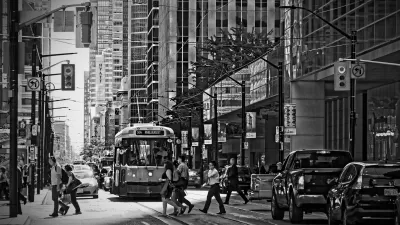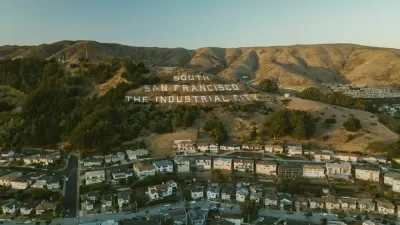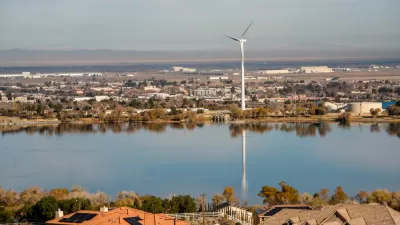Toronto's answer to the question posed in the headline is, "yes." One columnist wonders if the city can do more to balance its priorities.

Toronto Star Contributing Columnist Matt Elliott writes a provocative article questioning Toronto, Ontario's commitment to its waterfront as a burgeoning hot spot for film production.
According to the article, 5,500 employees work in the city's Port land area, mostly in industrial or film-related jobs. Now, "Toronto is embarking on a new phase of waterfront revitalization that will seek to protect these industries while also redeveloping the Port Lands."
Elliott describes the revitalization plan—titled "Audacity" and given a green light by the Toronto City Council and Toronto Mayor John Tory in November—as "fascinating from an urban planning perspective."
This industrial activity is happening even as the area around it rapidly develops with new office buildings, new condos, new retail and new public spaces. And while it frustrates me that trucks often block the bike lane across the Redpath driveway — and some people tell me they can’t stand the raw sugar smell — generally all the uses work well together.
One key urban panning consideration that Elliott is endeavoring to draw attention to is the lack of effort being made to develop housing along with all the ambitions new designs for the Port Lands. One deal in particular has raised eyebrows, according to Elliott: "Tory recently announced the city would lease 8.9 acres of city-owned land in the Port Lands to Hackman Capital Partners to build a new $250 million studio hub in the Port Lands."

Alabama: Trump Terminates Settlements for Black Communities Harmed By Raw Sewage
Trump deemed the landmark civil rights agreement “illegal DEI and environmental justice policy.”

Planetizen Federal Action Tracker
A weekly monitor of how Trump’s orders and actions are impacting planners and planning in America.

The 120 Year Old Tiny Home Villages That Sheltered San Francisco’s Earthquake Refugees
More than a century ago, San Francisco mobilized to house thousands of residents displaced by the 1906 earthquake. Could their strategy offer a model for the present?

San Francisco Opens Park on Former Great Highway
The Sunset Dunes park’s grand opening attracted both fans and detractors.

Oregon Legislature to Consider Transit Funding Laws
One proposal would increase the state’s payroll tax by .08% to fund transit agencies and expand service.

Housing Vouchers as a Key Piece of Houston’s Housing Strategy
The Houston Housing Authority supports 19,000 households through the housing voucher program.
Urban Design for Planners 1: Software Tools
This six-course series explores essential urban design concepts using open source software and equips planners with the tools they need to participate fully in the urban design process.
Planning for Universal Design
Learn the tools for implementing Universal Design in planning regulations.
Clanton & Associates, Inc.
Jessamine County Fiscal Court
Institute for Housing and Urban Development Studies (IHS)
City of Grandview
Harvard GSD Executive Education
Toledo-Lucas County Plan Commissions
Salt Lake City
NYU Wagner Graduate School of Public Service





























